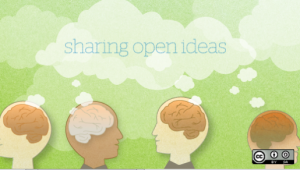We constantly talk about the dynamic changes in the business environment and how we need to adapt in order to survive, but how much do we look into the dynamics of our own organizations to make sure we achieve a balance that will allow us to thrive?
I we take Fritjof Capra‘s definition of dynamic balance, we find a different way of looking at our organization which can help us in better defining our HR Strategy.
“An ecosystem is a flexible, responsive, ever-fluctuating network. Its flexibility is a consequence of multiple dynamic sense-and-respond feedback loops that keep the system in a state of dynamic balance. No single variable is maximized: all variables fluctuate in concert around a collective optimum.”
Lets clarify this definition by looking at how Giles Hutchins talks about feedback loops in his book “The Nature of Business“:
“Nature is interconnected and interdependent, with every part of the ecosystem functioning as part of myriad seamless endless cycles. These beautifully coordinated cycles of nutrients, energy, water, materials and information are possible because of the feedback loops. Feedback loops are nature’s way of ‘staying in sync’ with ever-changing conditions.”
So the question is, do we really pay attention to the messages the organization is providing? Do we create an environment where there is a constant flow of feedback that enables the organization to continuously adapt to the constant change?
I fear the answer is no. One of the most important components of the definitions above is that every single part of an ecosystem is important. What I tend to see in organizations is that when there are conditions changing in the market, it is mostly upper management and the marketing and sometimes strategy specialists who define what the company will do in order to weather the storm. What we tend to forget is that there might be other things we can do to adapt that we don’t know of because we are not listening to the organization.
I have had the fortune (and also the stress) of living and working in Argentina during the hyperinflation. When I say hyperinflation I mean it: 4,923% inflation in 1989 followed by 1,343% in 1990! It is difficult to convey the type of environment this creates. You need to make decisions and make them fast. You need to decide if you are going to sell your products or not because between when you send them to the customer and when you receive their payment the money you receive is not enough to pay for the costs of producing it. In essence, you need to figure out how to survive.
I was working at a B2B company at the time and witnessed one of the best examples of how to listen and use the feedback to make it through the difficult times and be prepared for when things got better. We could not send the sales force out to get orders so, what could we do? They came up with impressive ideas of how to build customer loyalty by helping them find ways to move through this crisis and survive themselves. Sometimes it was simply helping them figure out a solution to a problem that normally would require a big investment but that with a little ingenuity could be resolved with much simpler means. It had nothing to do with our specific business, we were only helping out by listening and providing ideas.
What we were able to do with this approach of listening to employee ideas, keeping them informed of how things were evolving, involving all in thinking how we could reduce expenses so we could keep everyone employed, how to help our customers while we could not even provide them with our products, was to have extremely committed employees and customers. As soon as things started to improve a little and we were able to see the light at the end of the tunnel, we started selling at levels that were significantly higher than before the crisis. We became the number one provider for our products and services in the market.
What would have happened if we had not listened? I don’t know if I would be where I am today, because I don’t know if the company would have survived and maybe my career would have taken me to other shores.
My point is, if we want to maintain a dynamic balance that allows us to thrive despite difficult or normal ever changing conditions, we need to ensure that we have open communication channels that allow us to benefit from the knowledge and ideas of employees at all levels. Maybe looking deeply at some of the examples of companies that have failed can provide us with insight as to how much the employees knew about the mistakes their upper management was making and that they felt they had no power to influence or make their voices heard.
We don’t need to take this to the extreme. If we fail to listen and take advantage of the knowledge of our employees, we might still succeed but we will probably not achieve as much. Our role, when defining our HR Strategy, is to make sure we understand the dynamics of our organization and enable the feedback loops that will take advantage of our employee’s insights and ultimately achieve dynamic balance.



